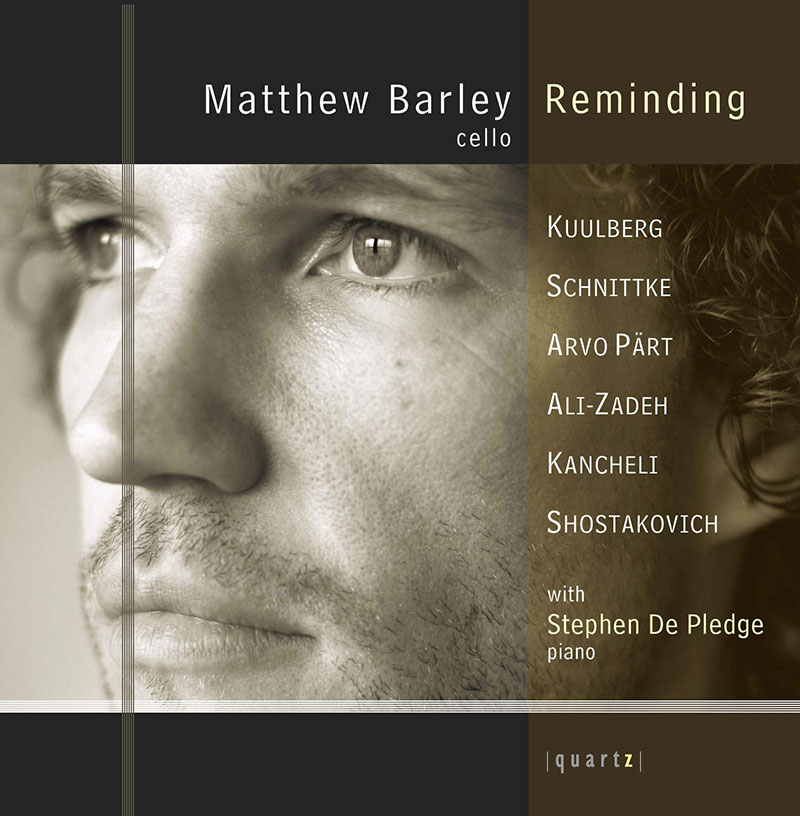Logowanie
KOLEKCJE!
BACH, CHOPIN, LISZT, MOZART, GRIEG, Dinu Lipatti, Otto Ackermann, Ernest Ansermet
The Master Pianist
PROKOFIEV, CHOPIN, TCHAIKOVSKY, SCHUMANN, BEETHOVEN, Martha Argerich, Claudio Abbado, Giuseppe Sinopoli
The Concerto Recordings
The Collection 2
Jakość LABORATORYJNA!
ORFF, Gundula Janowitz, Gerhard Stolze, Dietrich-Fischer Dieskau, Deutsche Oper Berlin, Eugen Jochum
Carmina Burana
ESOTERIC - NUMER JEDEN W ŚWIECIE AUDIOFILII I MELOMANÓW - SACD HYBR
Winylowy niezbędnik
ClearAudio
Essence MC
kumulacja zoptymalizowana: najlepsze z najważniejszych i najważniejsze z najlepszych cech przetworników Clearaudio
Direct-To-Disc
PIAZZOLLA, ChamberJam Europe
Tangos del Ángel y del Diablo
Direct-to-Disc ( D2D ) - Numbered Limited Edition
SHOSTAKOVICH, SCHNITTKE, PART, KANCHELI, Matthew Barley
Works for Cello and Piano
- <
- Suite from Cheryomushki (Op. 105, 1959) 11:17
- 1 I Walk About Moscow 4:02
- 2 II Waltz of the Flowers 1:09
- 3 III Duet of Lidochka and Boris 6:09
- ALFRED SCHNITTKE
- Sonata No. 1 (1979) 20:51
- 4 I Largo 3:40
- 5 II Presto 6:32
- 6 III Largo 10:39
- 7 Musica Nostalgica (1992) 3:18
- GIYA KANCHELI
- 8 With a Smile for Slava (1997) 2:34
- FRANGHIS ALI-ZADEH
- 9 Habil Sajahy (In the Style of Habil, 1979) 15:02
- ARVO PART
- 10 Fratres (1977) 10:23
- MATI KUULBERG
- 11 Meenutus (Reminding) (1987) 5:09
- Matthew Barley - cello
- SHOSTAKOVICH
- SCHNITTKE
- PART
- KANCHELI
In the late 1980s I was very fortunate to be given a British Council scholarship to study in the Soviet Union for two years at the Moscow Conservatoire. These two years changed my life in many ways, not least of which was my playing, firmly rooted in the Russian school, and my enduring love of music, not only from Russia, but from the whole of the Soviet empire in all its eclectic glory. This disc contains music from all over that vast region, and reflects the amazing diversity: the (exotic to Western ears) sounds of central Asia in the Ali-Zade, the quirky humour of Kancelli from the Caucasus, the spiritual minimalism of Arvo Part and Mati Kuulberg from the pre-Baltic states. And, of course, the great Russian soul as represented by the folk themes wound around Shostakovich’s Cheremushki suite, and the probing depths of Schnittke’s incomparable music. As is well known, life was not easy in the Soviet Union, and this recording is a great celebration of the fact the human beings have an indestructible will to create under almost any circumstances. The following programme notes contain several images of the music that are strong for me they are by no means my interpretation of what the composer was trying to say; rather, imagery is for many people a valuable entry point into unfamiliar music so I provided the examples as a personal reference point. Others may wish to ignore it, and simply get on with listening to the music.

























